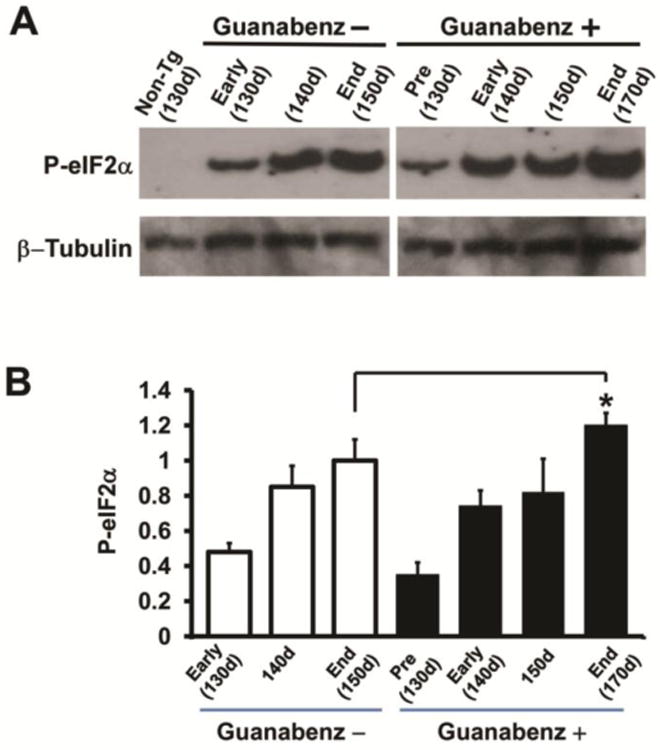Figure 4.

Levels of phosphorylated eIF2α mice in the lumbar spinal cord of guanabenz-treated and untreated G93A mice and untreated littermate non-transgenic mice. (A) Representative western blots from differently aged guanabenz-treated G93A mice, untreated G93A mice, and control non-transgenic littermate mice immunostained with antibodies to p-eIF2α. Anti-β tubulin antibody was used as a loading control. (B) Bar diagrams showing quantitation of p-eIF2α from western blots of homogenates of the lumbar spinal cord from guanabenz-treated G93A mice (n=4) and untreated G93A mice (n=4) mice at end stage of disease. The mean±standard deviation is shown. The value of p-eIF2α detected in untreated G93A mice at 150 days mice was arbitrarily set as 1. There is a statistically significant higher amount of p-eIF2α in the lumbar spinal cord of guanabenz-treated G93A mice at endstage (170 days) (** P < 0.05, n=4) compared to untreated G93A mice at endstage (150 days). The data were statistically analyzed using a t-test.
